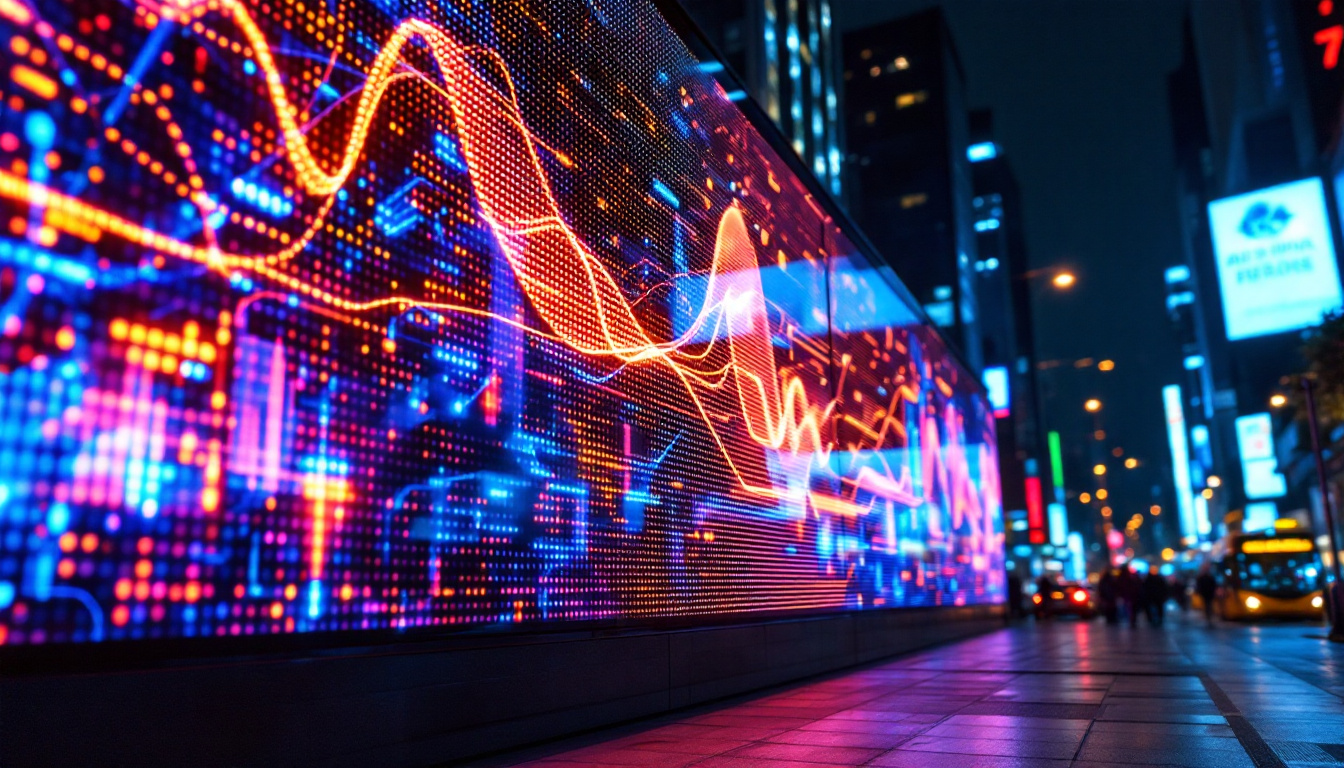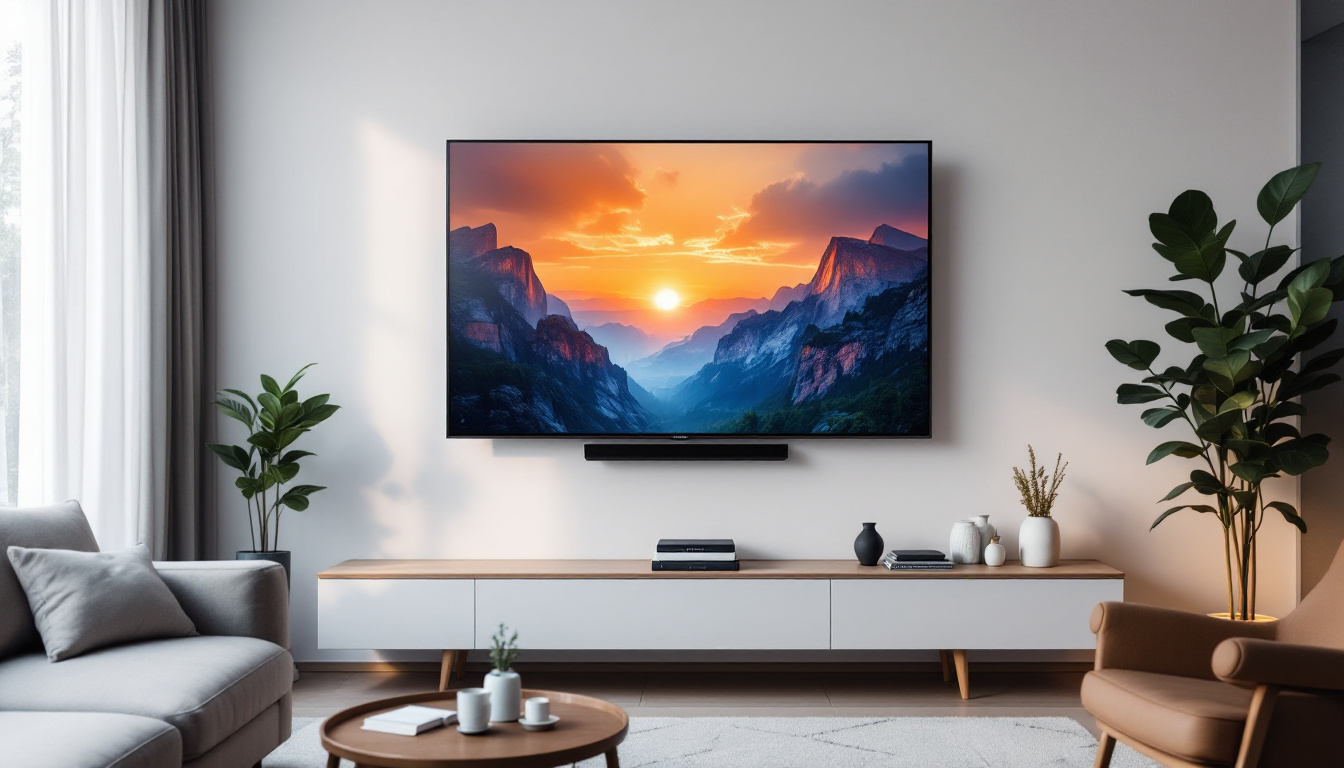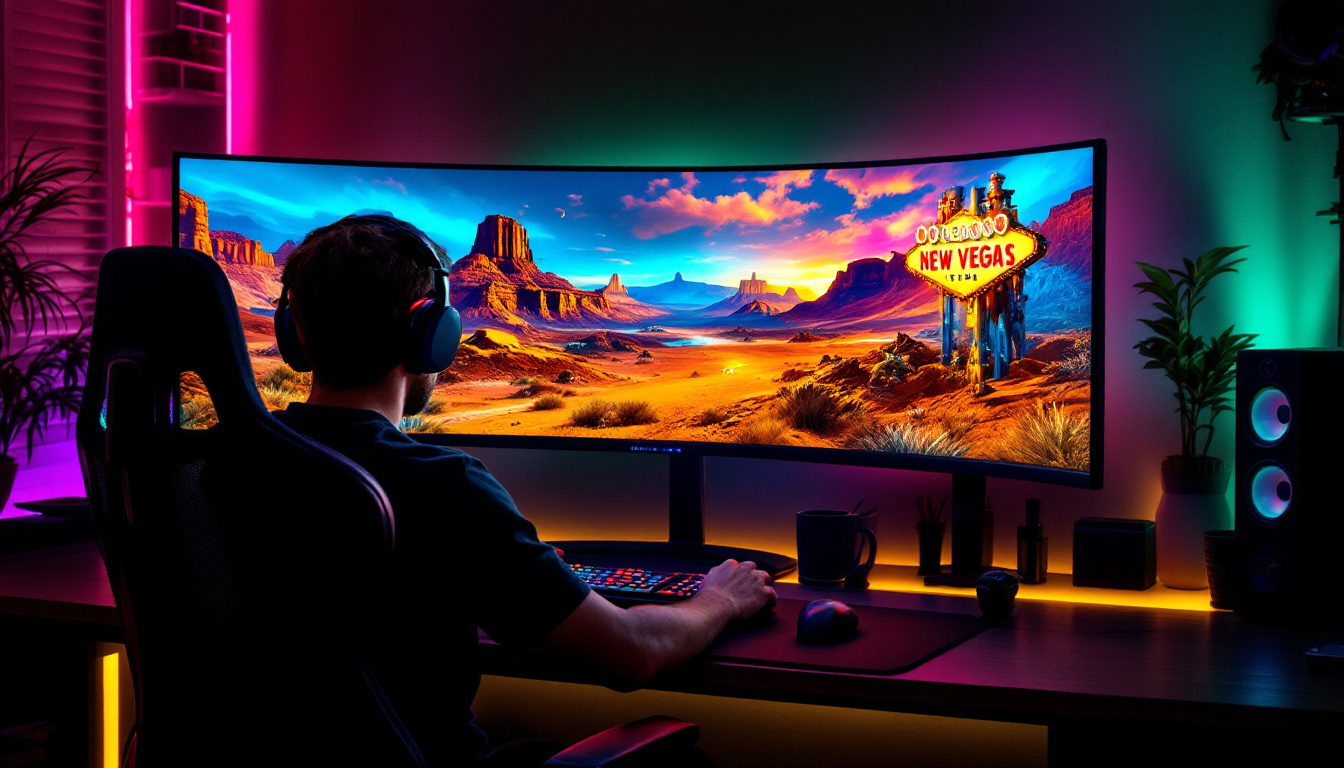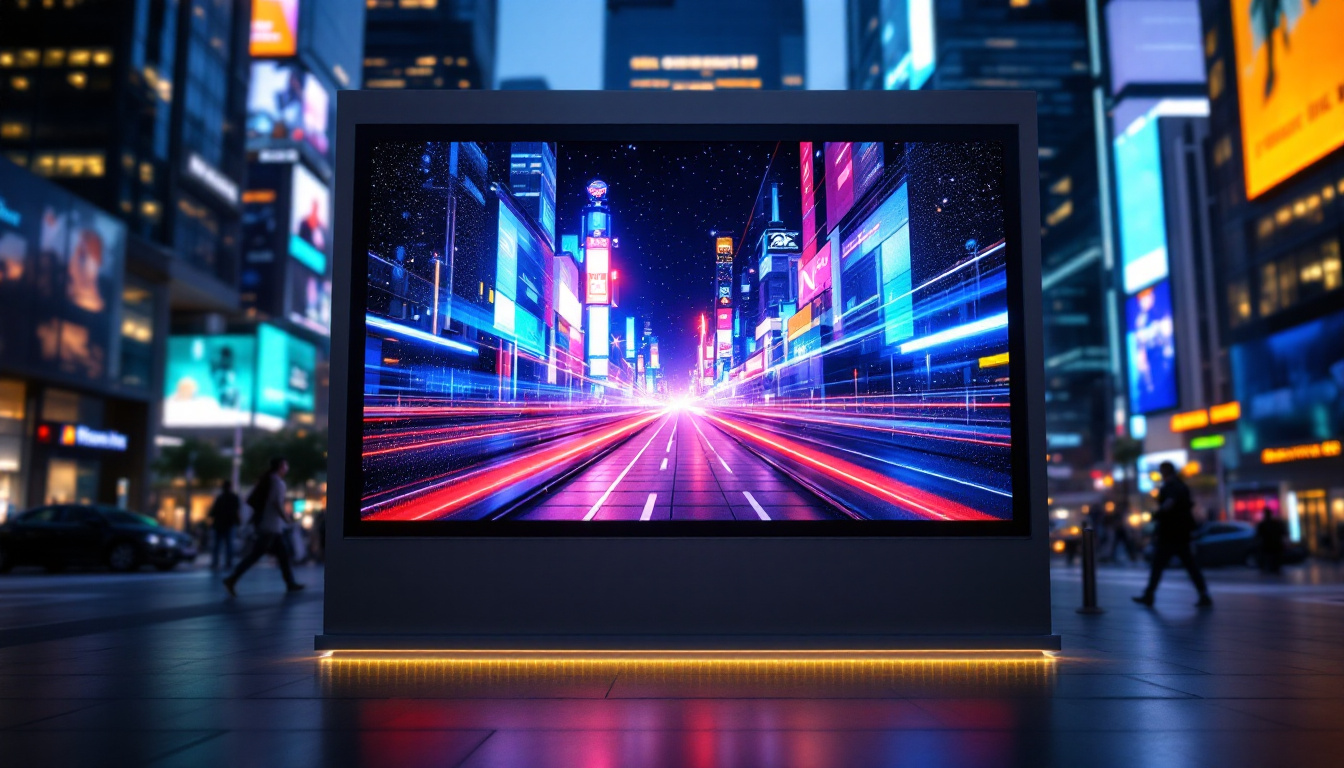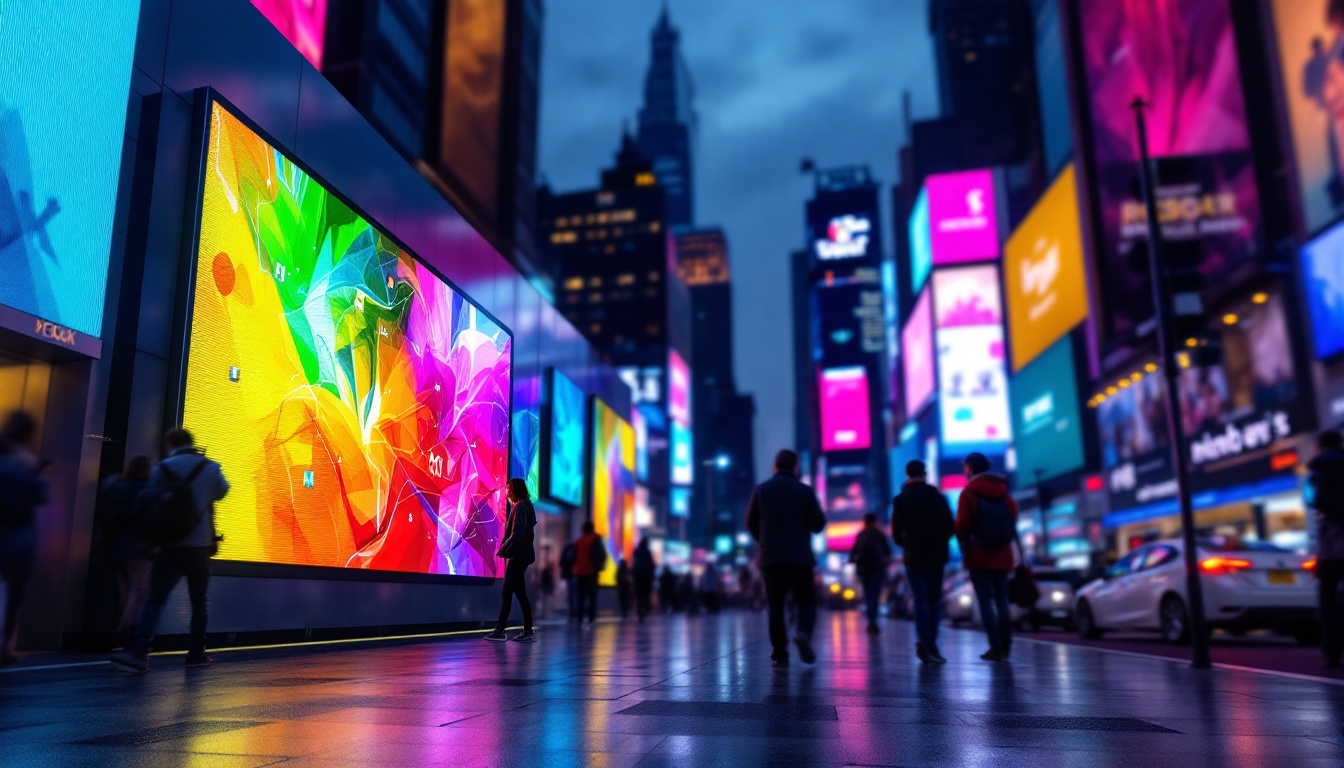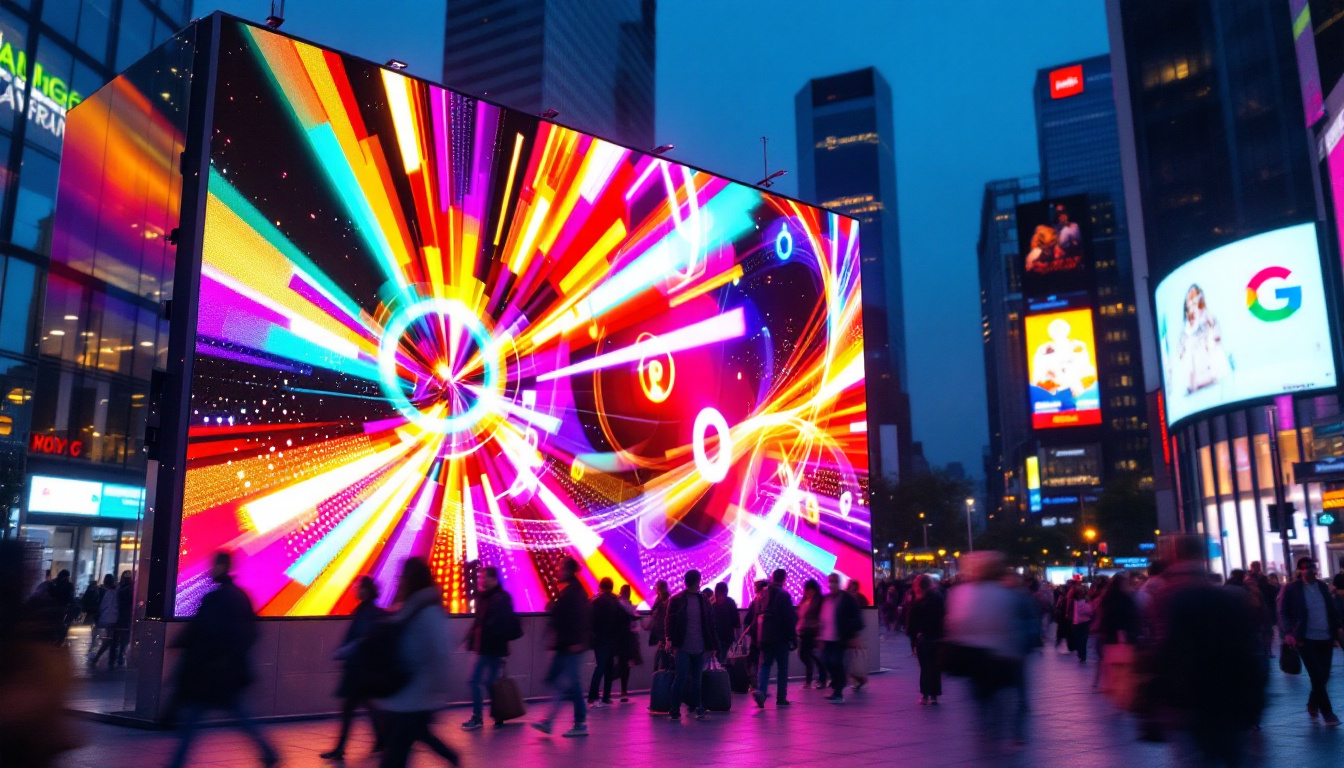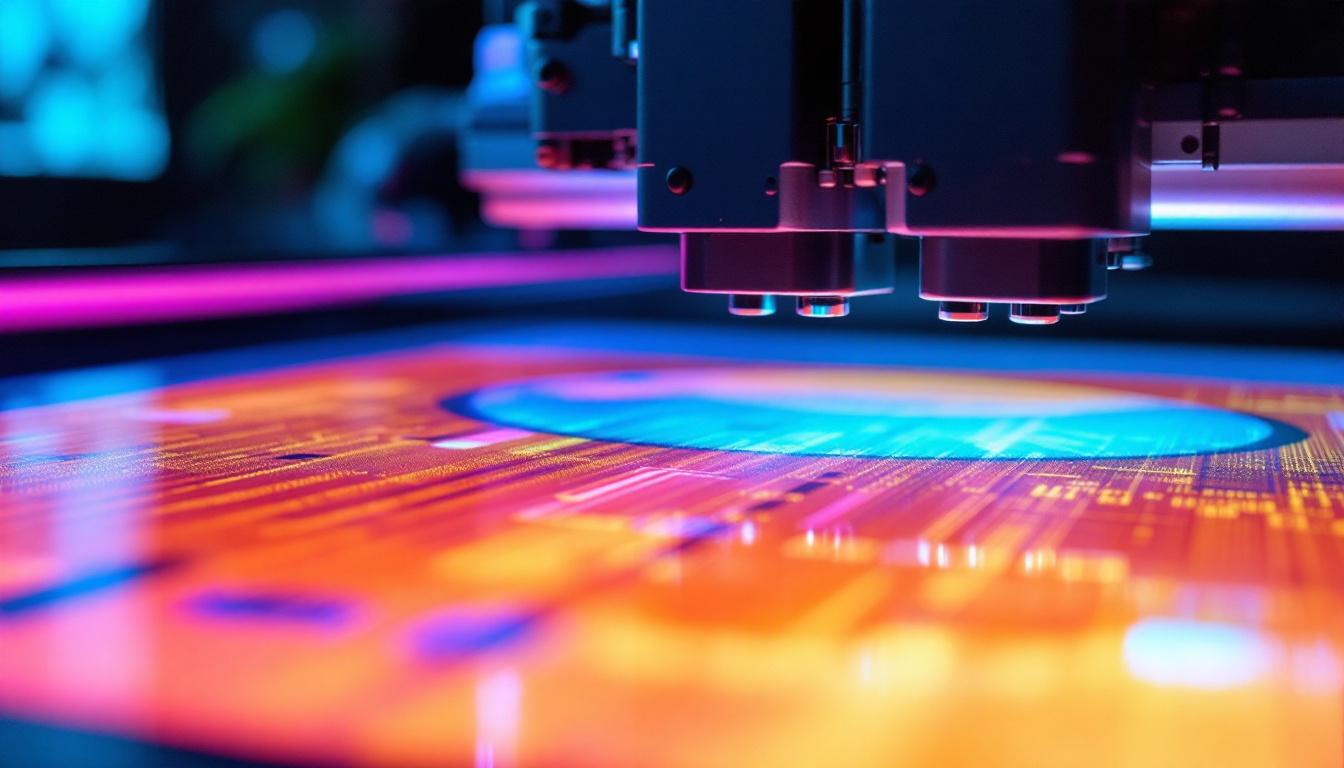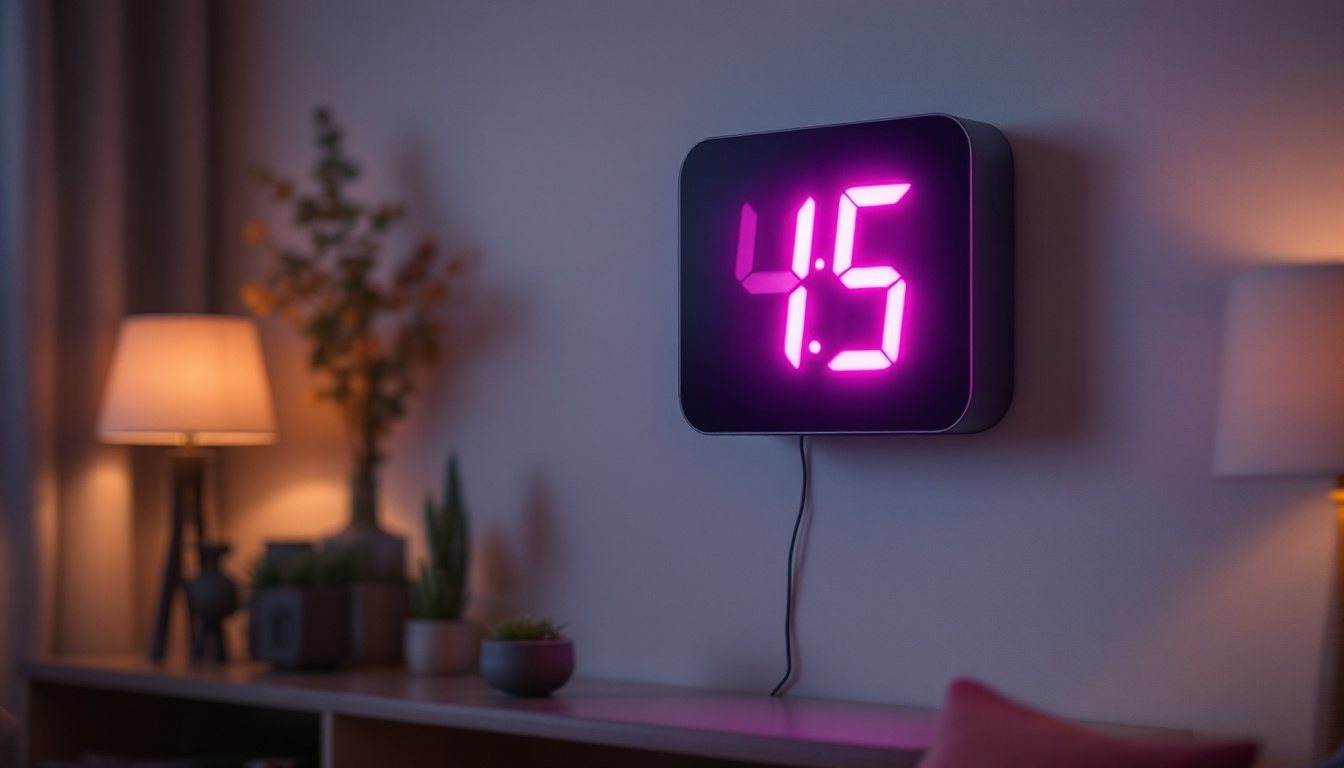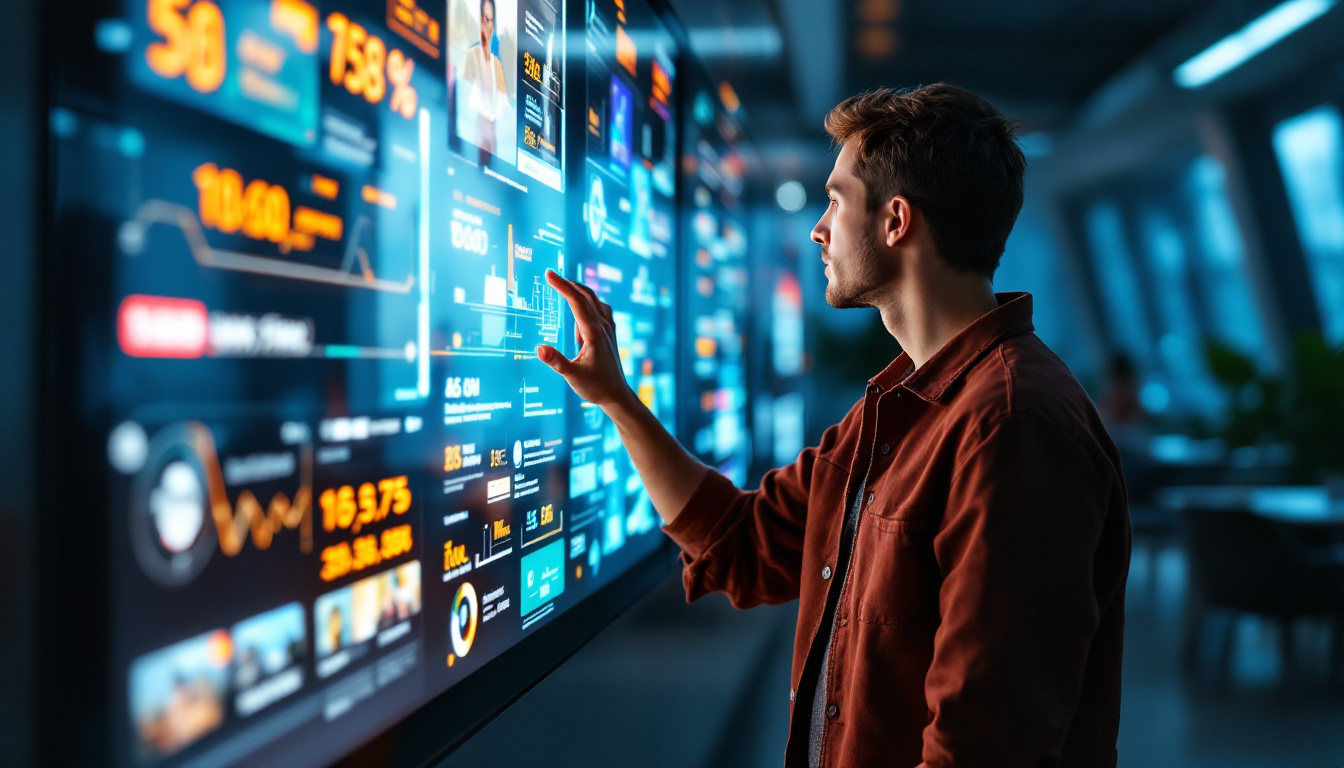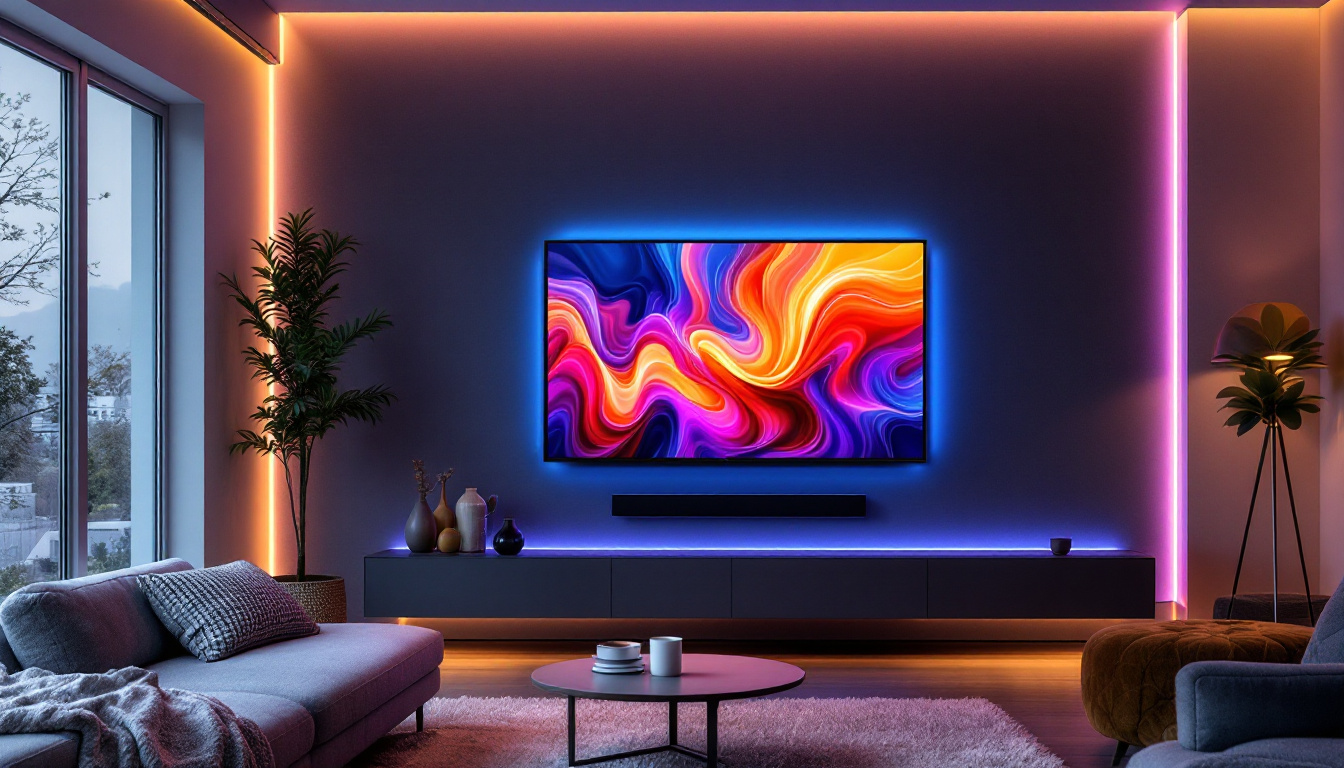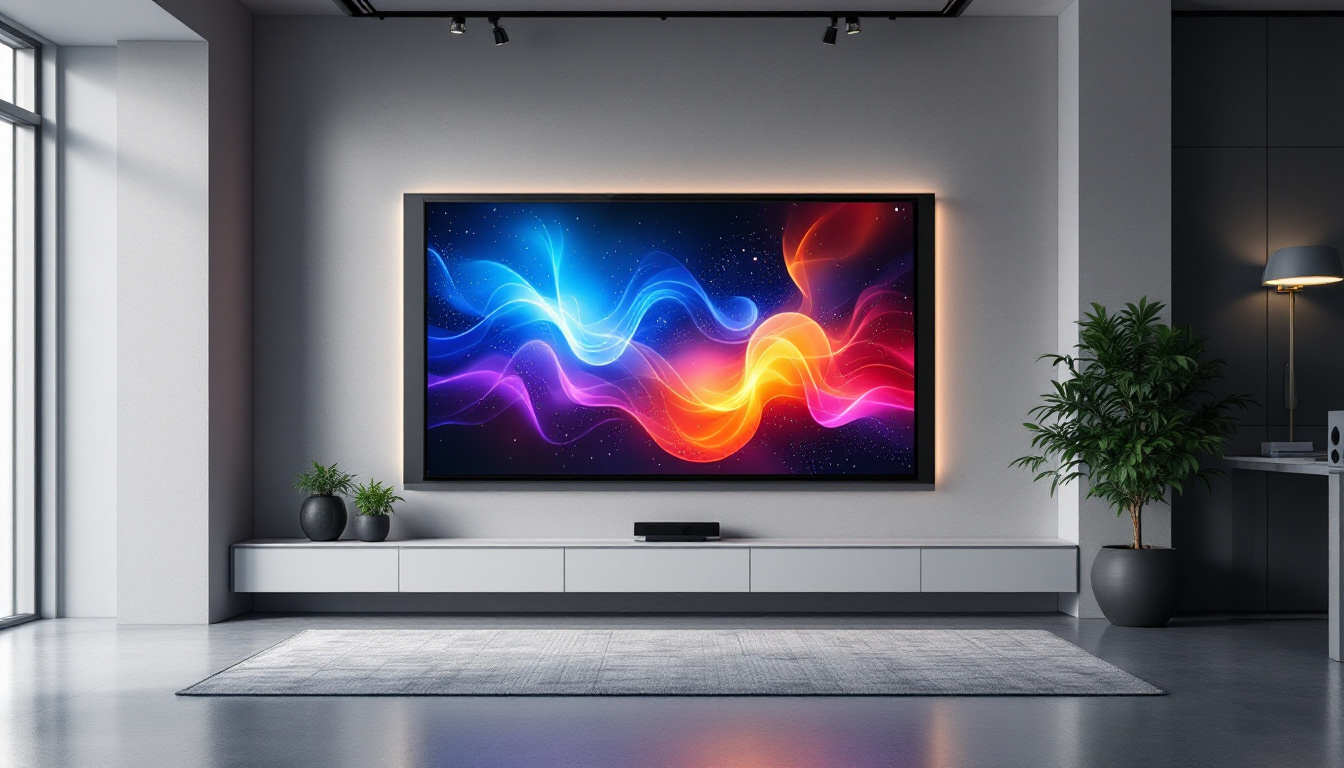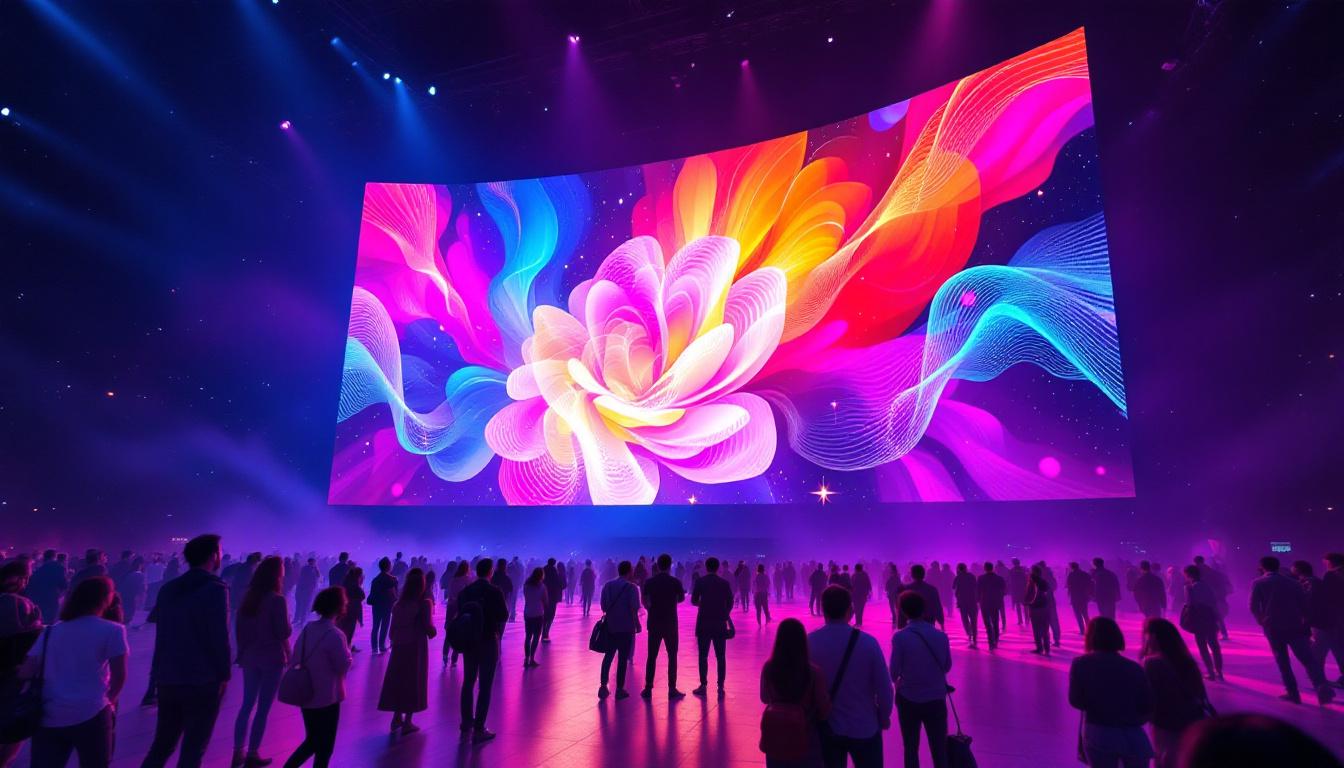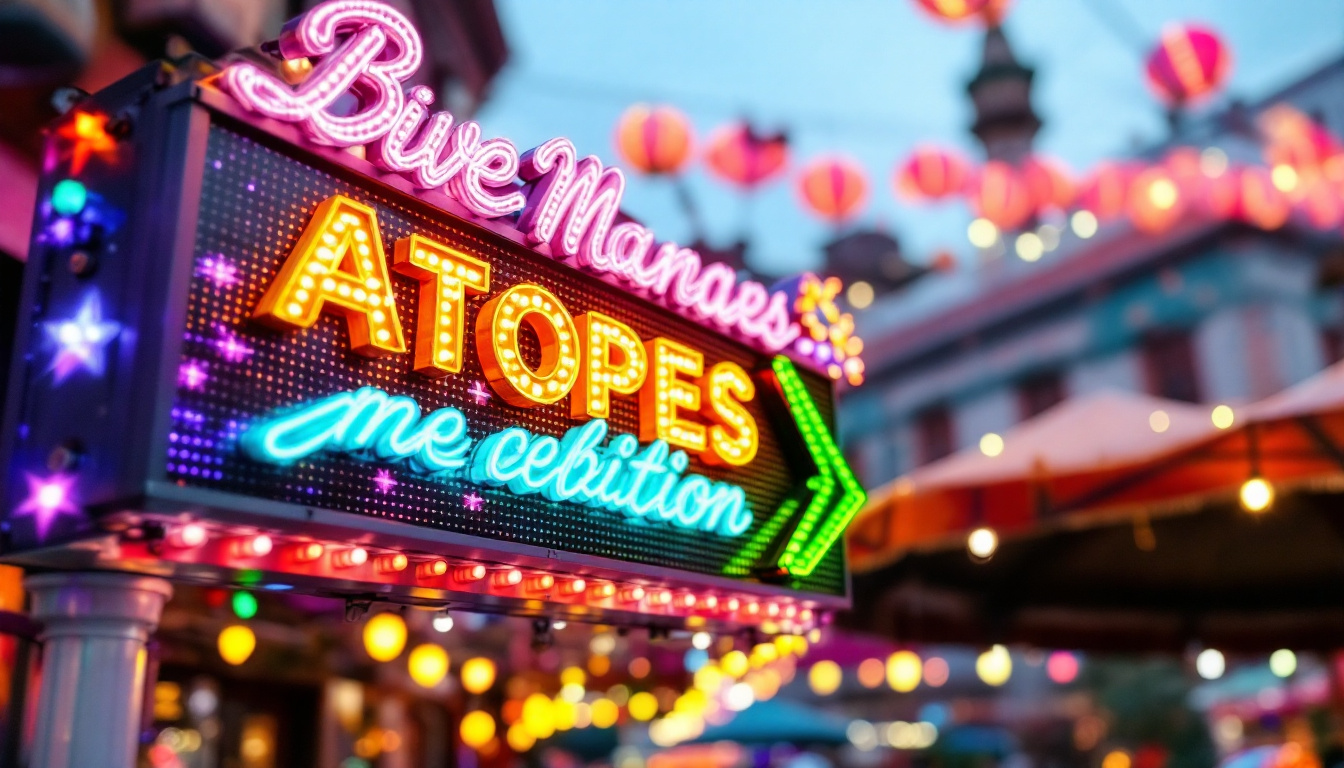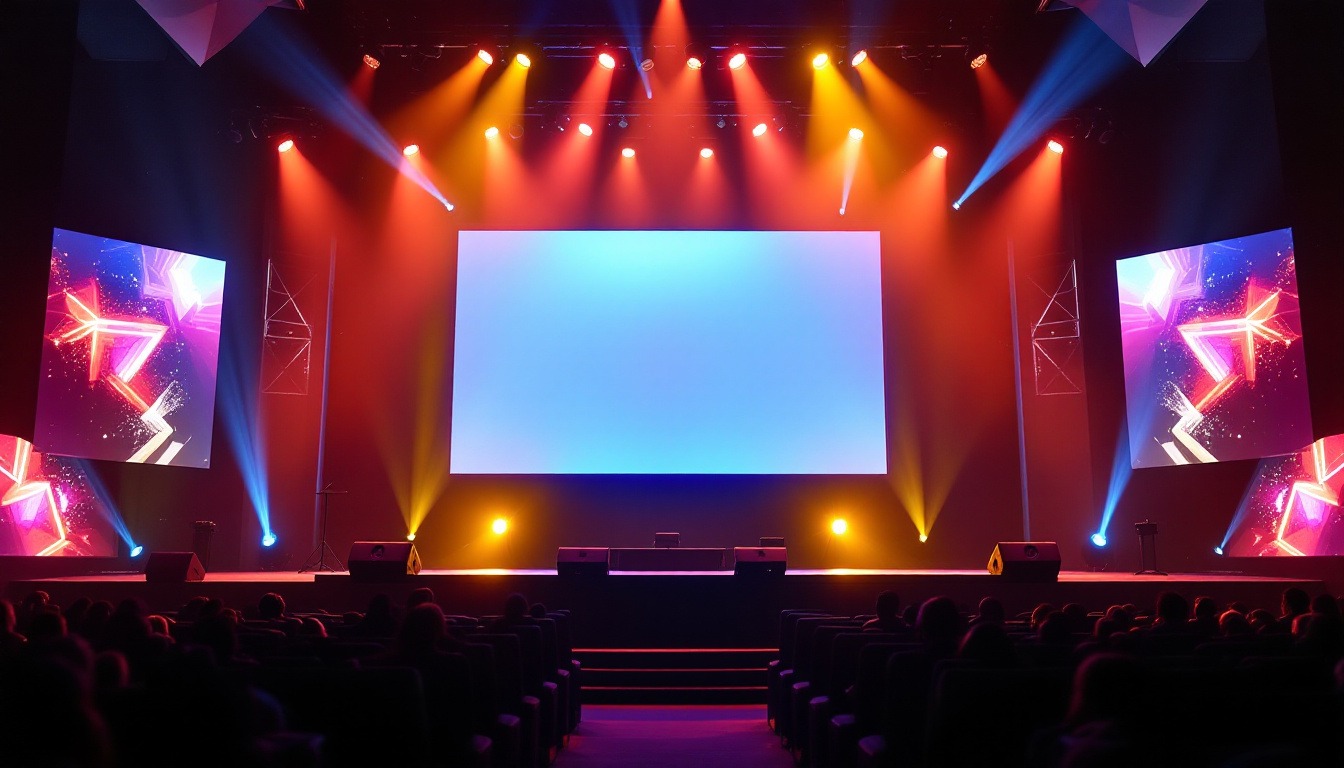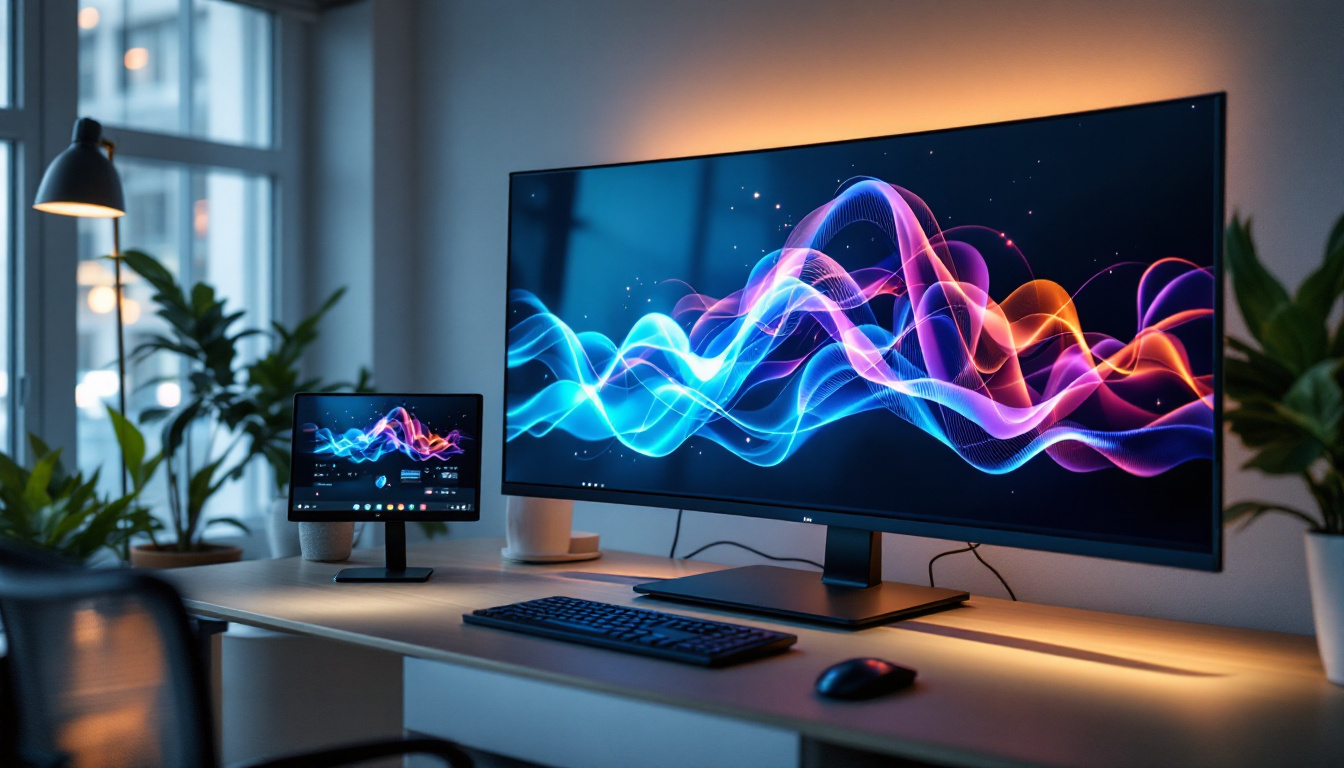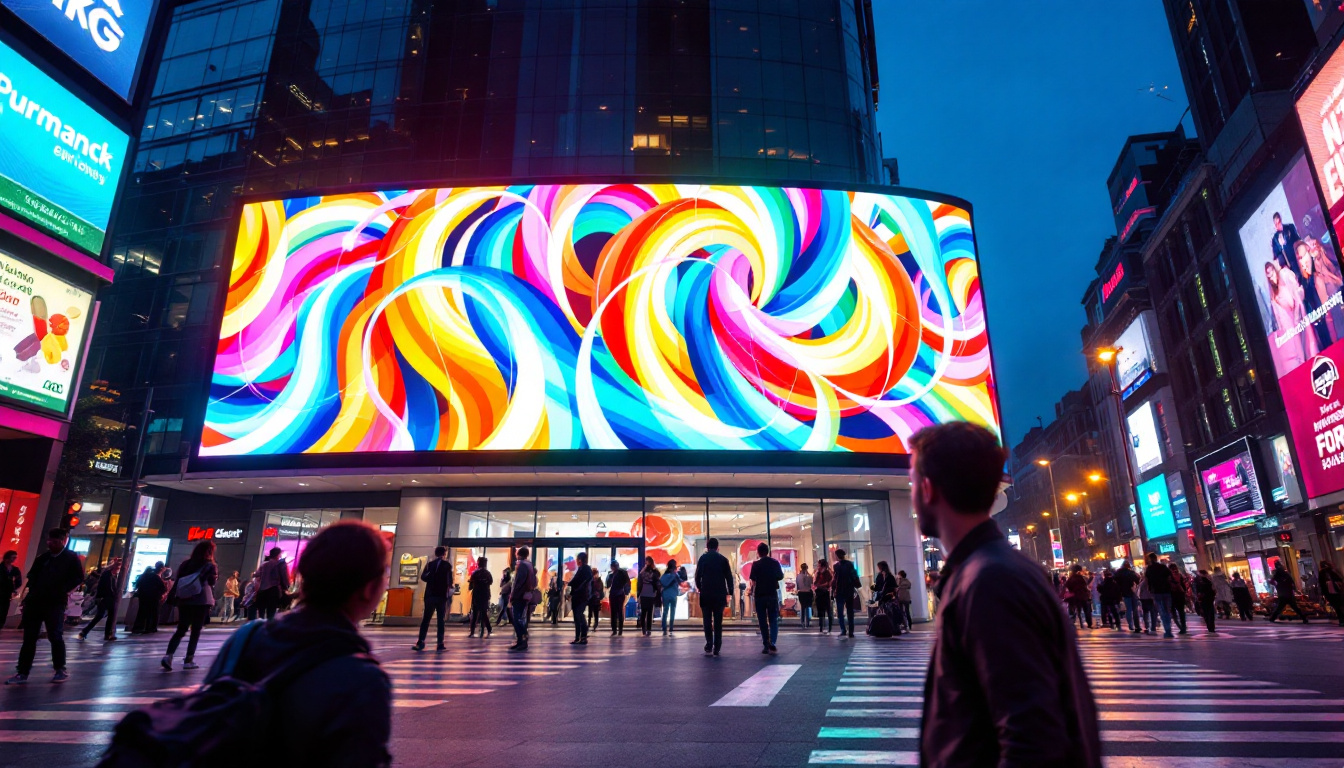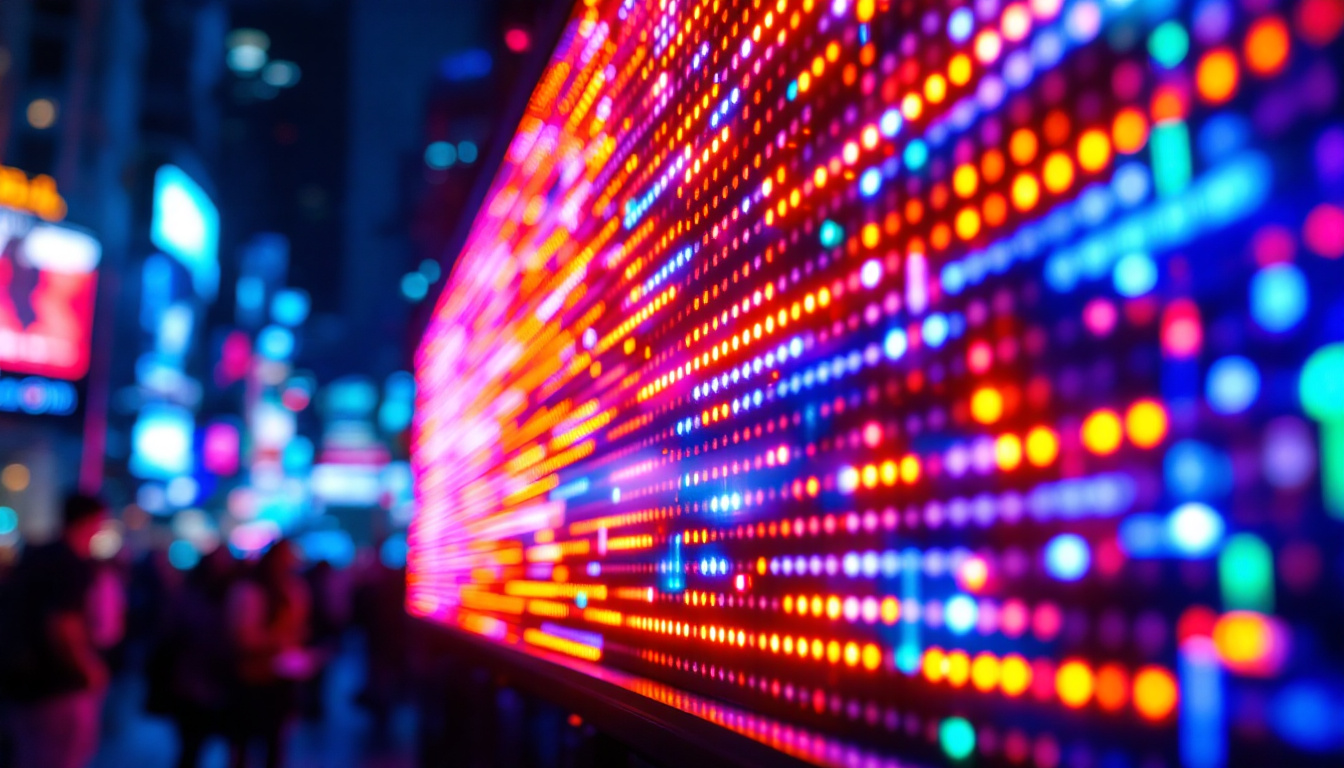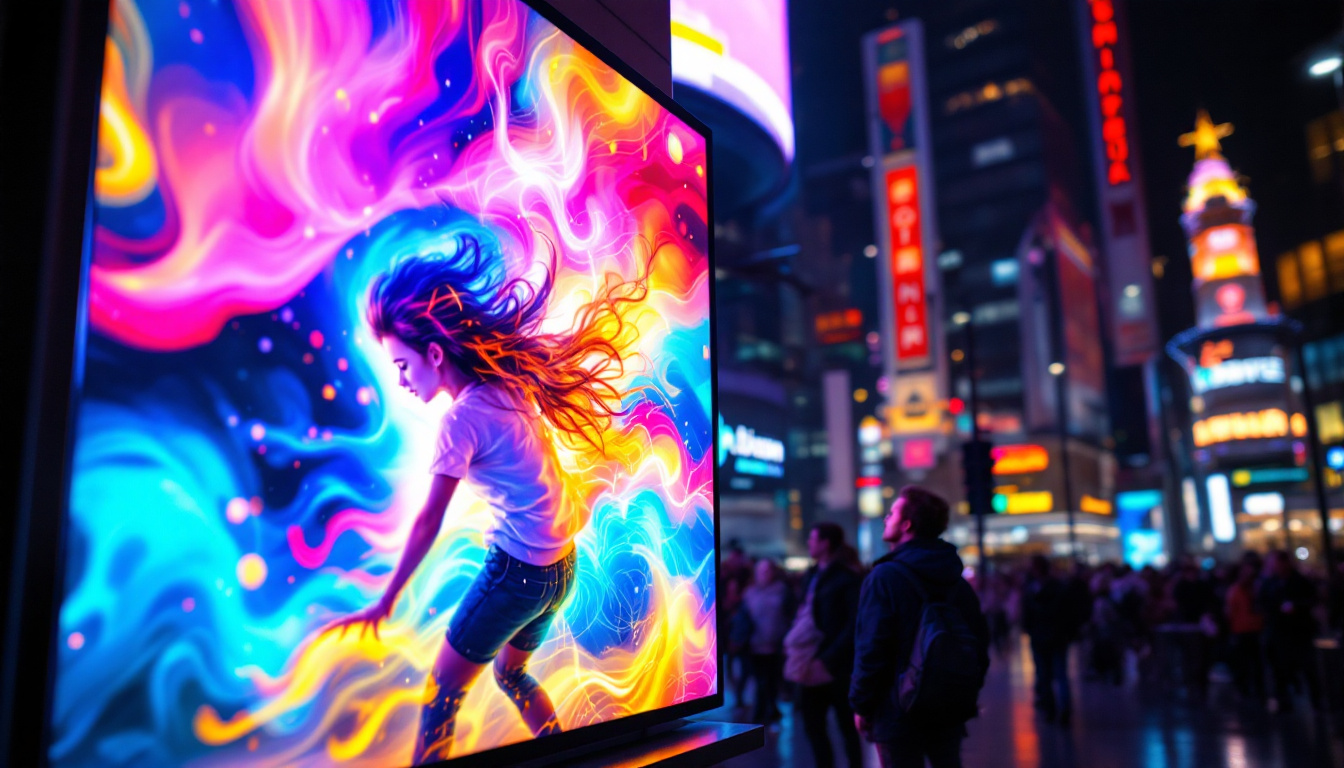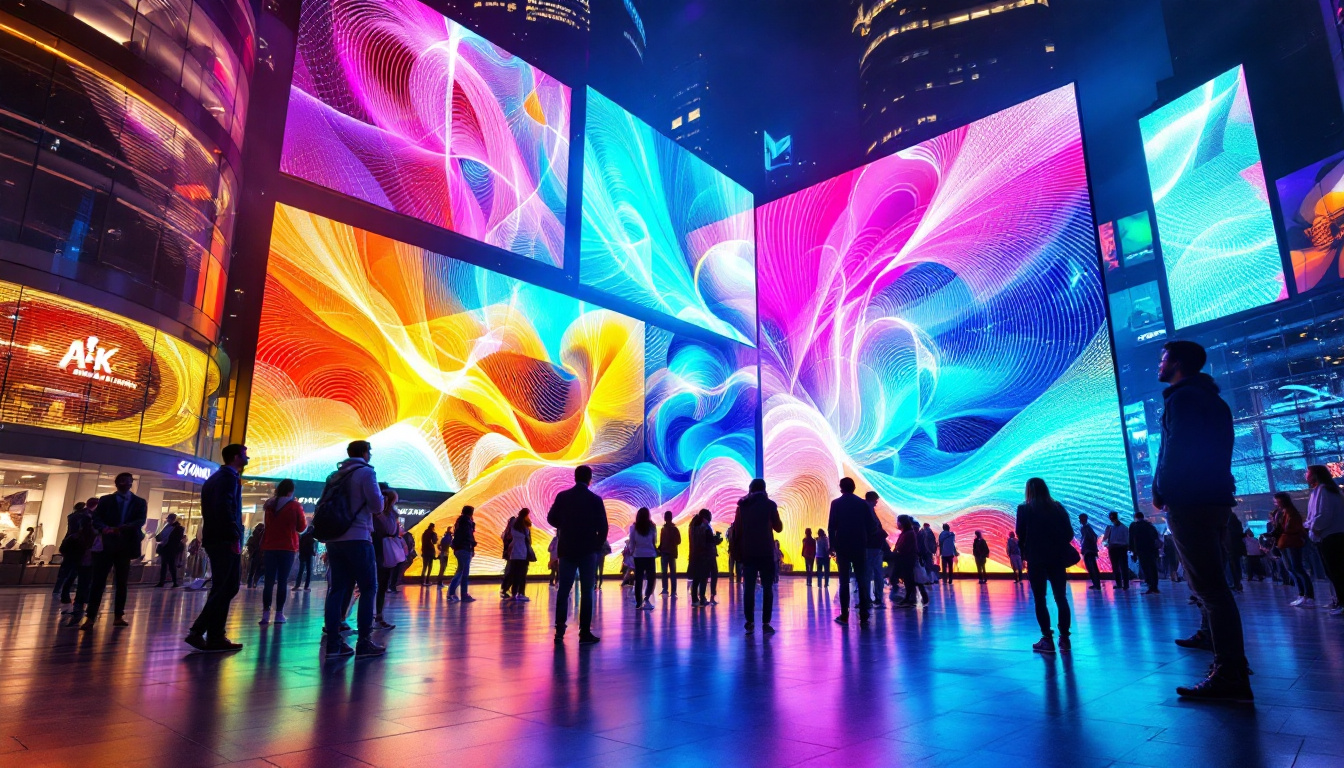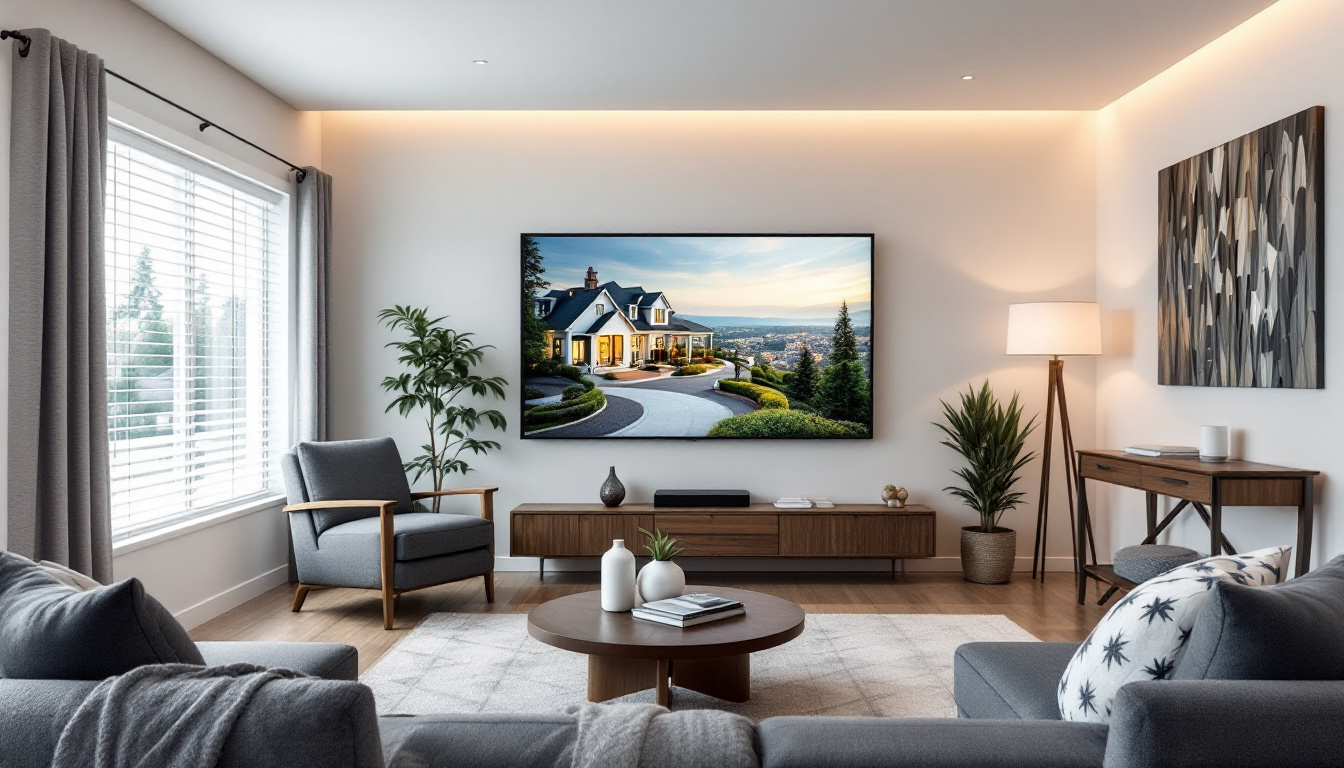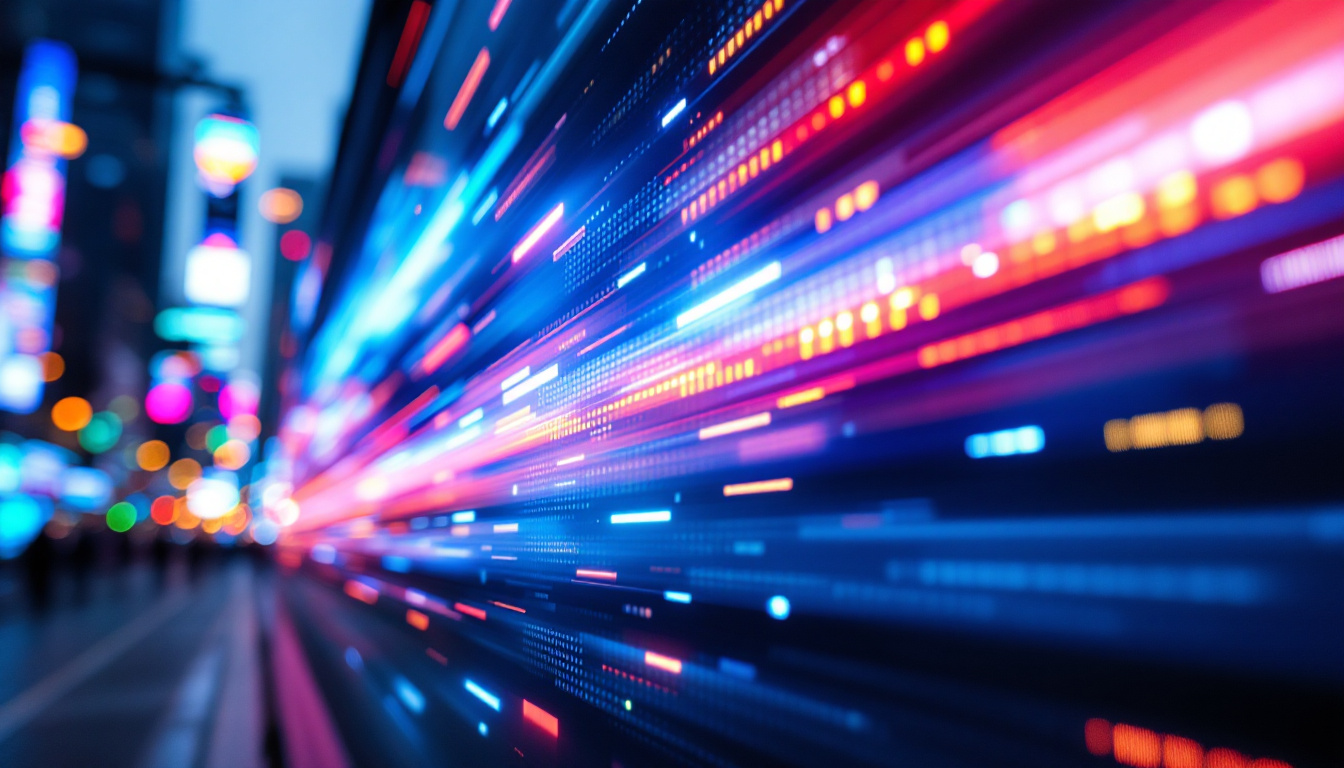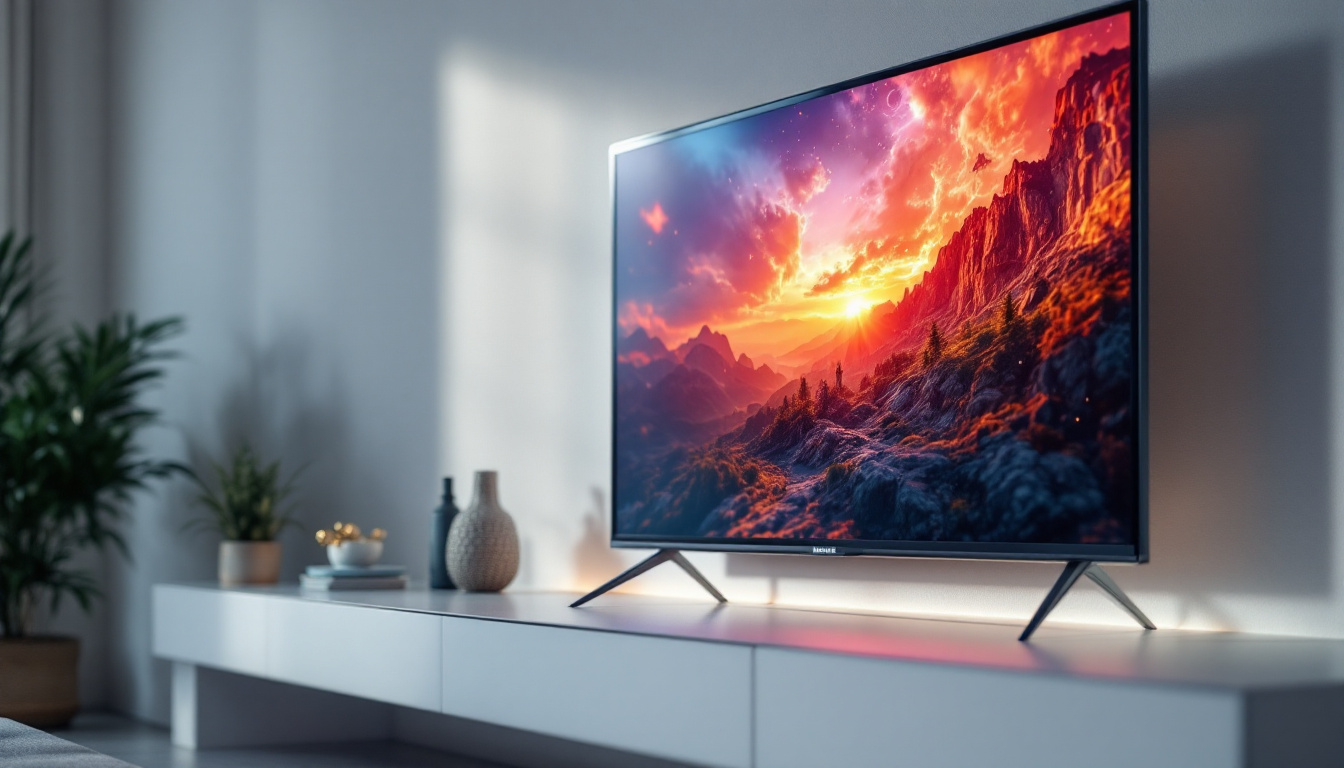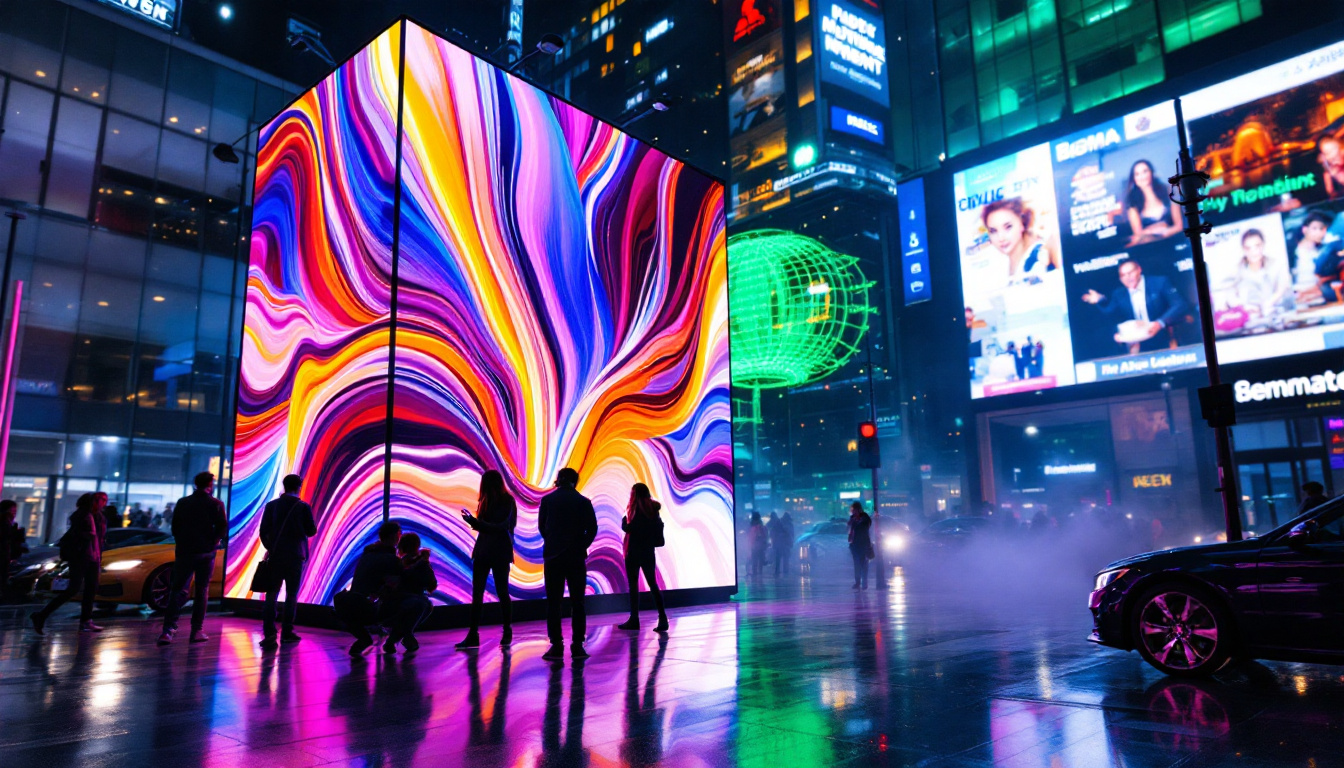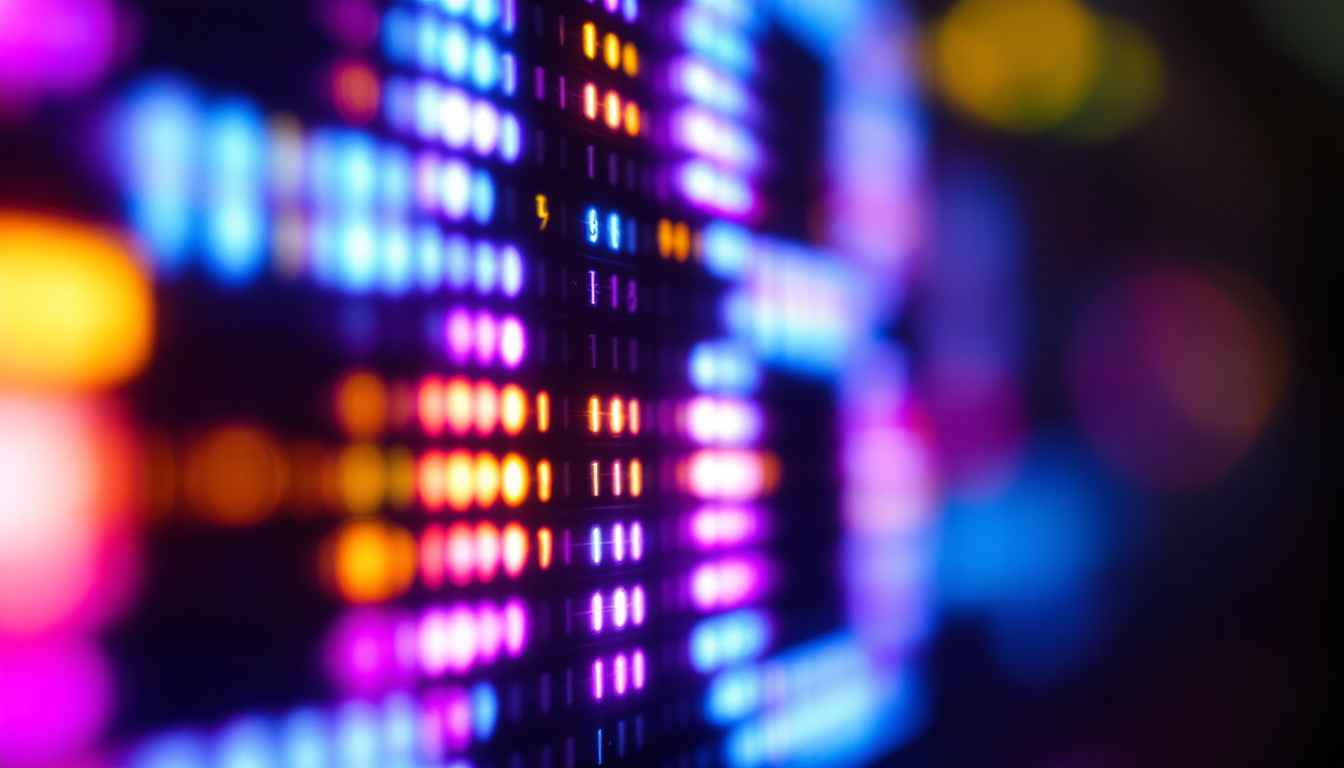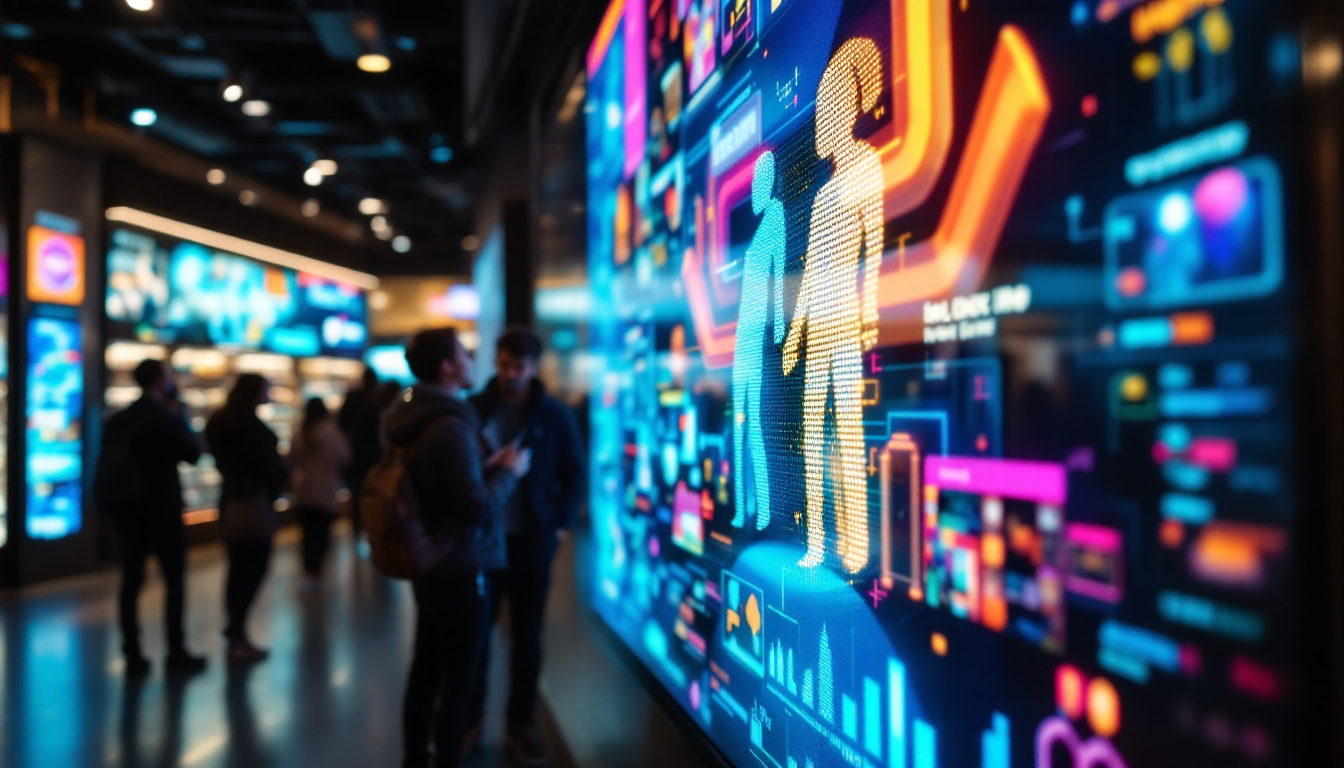In the rapidly evolving world of technology, digital display art has emerged as a captivating medium that combines creativity and innovation. Among the various types of digital displays, LED (Light Emitting Diode) technology stands out for its versatility, vibrancy, and efficiency. This article delves into the intricacies of LED displays, exploring their applications, advantages, and the artistic potential they hold.
Understanding LED Technology
LED technology has revolutionized the way we perceive light and color. Unlike traditional incandescent bulbs, LEDs are semiconductor devices that emit light when an electric current passes through them. This fundamental difference in operation leads to several advantages, making LEDs the preferred choice for modern displays. Their energy efficiency, longevity, and reduced heat emission not only contribute to lower electricity bills but also to a smaller carbon footprint, making them an environmentally friendly option.
The Science Behind LEDs
At the core of LED technology lies the principle of electroluminescence. When electrons recombine with holes in a semiconductor, energy is released in the form of photons, producing visible light. The color of the emitted light depends on the materials used in the semiconductor, allowing for a wide range of colors and brightness levels. This property is particularly advantageous in applications requiring precise color representation, such as in digital signage and artistic installations.
LEDs can be grouped into two main categories: organic LEDs (OLEDs) and inorganic LEDs. While OLEDs are known for their superior color accuracy and flexibility, inorganic LEDs dominate the market due to their durability and cost-effectiveness. This versatility has led to their widespread adoption in various applications, from consumer electronics to large-scale displays. Furthermore, advancements in LED technology continue to push the boundaries of what is possible, with innovations like mini-LEDs and micro-LEDs offering even greater control over brightness and color, paving the way for next-generation displays.
Types of LED Displays
LED displays come in various forms, each tailored to specific applications and environments. The most common types include:
- Direct View LED Displays: These displays consist of individual LED modules that are directly visible to the viewer. They are commonly used for outdoor advertising and large-scale installations due to their high brightness and visibility. Their ability to withstand harsh weather conditions makes them ideal for billboards and stadium screens.
- LED Video Walls: Composed of multiple LED panels, video walls create a seamless display for dynamic content. They are often used in control rooms, events, and entertainment venues. The modular nature of these displays allows for customization in size and resolution, catering to the specific needs of any event or installation.
- LED Backlit Displays: These displays utilize LEDs to illuminate an LCD panel from behind, enhancing brightness and color accuracy. They are prevalent in televisions and computer monitors. The transition from traditional CCFL backlighting to LED backlighting has significantly improved energy efficiency and picture quality in consumer electronics.
In addition to the types mentioned, there are also specialized LED displays designed for niche applications. For instance, flexible LED displays are gaining traction in creative industries, allowing for innovative designs that can bend and curve to fit unique spaces. Similarly, transparent LED displays are emerging, enabling businesses to showcase advertisements while maintaining visibility through windows. These advancements highlight the ongoing evolution of LED technology, continually expanding its potential applications across various sectors.
Applications of LED Displays
The versatility of LED technology has led to its adoption across various sectors, transforming the way information is conveyed and art is experienced. From advertising to artistic installations, the applications of LED displays are vast and varied.
Advertising and Marketing
One of the most prominent applications of LED displays is in advertising. Billboards and digital signage have become ubiquitous in urban landscapes, capturing the attention of passersby with vibrant colors and dynamic content. The ability to change messages in real-time allows businesses to engage customers more effectively, promoting special offers or events instantly.
Moreover, LED displays can be programmed to display targeted advertisements based on time of day, audience demographics, or even weather conditions, making them a powerful tool in the marketing arsenal.
Artistic Installations
In the realm of art, LED displays have opened new avenues for creativity. Artists are increasingly incorporating LED technology into their works, creating immersive experiences that blend light, color, and movement. Installations can range from interactive displays that respond to viewer input to large-scale projections that transform public spaces.
These artistic endeavors not only challenge traditional notions of art but also invite audiences to engage with the work in novel ways. The fusion of technology and creativity has given rise to a new genre of digital art that captivates and inspires.
Entertainment and Events
LED displays have become a staple in the entertainment industry, enhancing concerts, theater productions, and sporting events. Their ability to produce bright, high-resolution visuals ensures that audiences have an unforgettable experience. From dazzling light shows to immersive backdrops, LED technology plays a crucial role in creating engaging environments.
Furthermore, the portability and modularity of LED panels allow for flexible setups, making them ideal for touring productions and events of all sizes. This adaptability has made LED displays a preferred choice for event planners and production teams.
Advantages of LED Displays
LED displays offer a multitude of advantages over traditional display technologies, making them an attractive option for various applications. Understanding these benefits can help businesses and artists make informed decisions when considering digital display solutions.
Energy Efficiency
One of the most significant advantages of LED displays is their energy efficiency. LEDs consume significantly less power than traditional incandescent or fluorescent lights, leading to lower energy bills and a reduced carbon footprint. This efficiency is particularly beneficial for large installations that operate continuously, such as outdoor billboards and digital signage.
Additionally, the longevity of LEDs contributes to their cost-effectiveness. With a lifespan of up to 100,000 hours, LED displays require less frequent replacements, further reducing maintenance costs.
Brightness and Visibility
LED displays are renowned for their exceptional brightness, making them ideal for outdoor applications where sunlight can diminish visibility. The high luminance levels ensure that content remains clear and vibrant, even in direct sunlight. This characteristic is crucial for advertising and public information displays, where legibility is paramount.
Moreover, LED displays offer wide viewing angles, allowing viewers to see content clearly from various positions. This feature enhances the overall effectiveness of the display, ensuring that messages reach a broader audience.
Color Accuracy and Flexibility
LED technology allows for precise color control, resulting in stunning visuals that captivate viewers. The ability to produce a wide color gamut ensures that images and videos are rendered with remarkable accuracy, making LED displays suitable for applications that require high-quality visuals, such as art installations and branding.
Furthermore, the modular nature of LED displays allows for flexible configurations. Panels can be arranged in various shapes and sizes, enabling creative installations that suit specific environments and artistic visions.
Challenges and Considerations
While LED displays offer numerous advantages, there are also challenges and considerations that must be addressed. Understanding these aspects can help users maximize the potential of LED technology while mitigating potential drawbacks.
Initial Costs
One of the primary challenges associated with LED displays is the initial investment. High-quality LED panels can be expensive, which may deter some businesses and artists from adopting this technology. However, it is essential to consider the long-term savings associated with energy efficiency and reduced maintenance costs.
For organizations looking to invest in LED displays, exploring financing options or rental agreements can help alleviate the burden of upfront costs while still reaping the benefits of this advanced technology.
Technical Expertise
Implementing LED displays often requires technical expertise, particularly for large-scale installations. Proper installation, calibration, and maintenance are crucial to ensure optimal performance. Organizations may need to invest in training or hire specialized professionals to manage these aspects effectively.
Additionally, as technology continues to evolve, staying updated on the latest advancements and best practices is essential for maximizing the potential of LED displays.
The Future of LED Display Art
The future of LED display art is bright, with ongoing advancements in technology promising to enhance both the artistic and functional aspects of these displays. As artists and technologists continue to collaborate, new possibilities are emerging that will redefine the boundaries of digital art.
Integration with Emerging Technologies
As technologies such as augmented reality (AR) and virtual reality (VR) gain traction, the integration of LED displays with these platforms is becoming increasingly feasible. This convergence has the potential to create immersive experiences that blur the lines between the physical and digital worlds.
Imagine walking through a gallery where LED displays interact with AR elements, allowing viewers to engage with the artwork in unprecedented ways. This fusion of technologies could revolutionize the way art is experienced and appreciated.
Sustainability and Eco-Friendly Practices
As environmental concerns continue to grow, the demand for sustainable practices in the art and technology sectors is becoming more pronounced. LED technology, with its energy efficiency and longevity, aligns well with these sustainability goals. Artists and organizations are increasingly seeking eco-friendly materials and practices, ensuring that their work minimizes its impact on the environment.
Future innovations may also focus on developing recyclable LED materials and reducing the carbon footprint associated with manufacturing and installation processes.
Conclusion
Digital display art, particularly through the lens of LED technology, represents a dynamic intersection of creativity and innovation. With their vibrant colors, energy efficiency, and versatility, LED displays have transformed the way art is created, experienced, and appreciated. As technology continues to advance, the potential for LED displays in artistic expression and communication is boundless.
Whether in advertising, artistic installations, or entertainment, LED displays are set to play an increasingly prominent role in shaping the visual landscape of the future. Embracing this technology opens doors to new creative possibilities, inviting artists and audiences alike to explore the limitless potential of digital display art.
Explore the Art of Possibility with LumenMatrix
As you stand at the crossroads of art and technology, LumenMatrix invites you to experience the future of digital display art. Our innovative LED display solutions, ranging from Indoor and Outdoor LED Wall Displays to specialized options like Vehicle LED Displays, LED Posters, and Transparent LED Displays, are designed to bring your creative vision to life. With LumenMatrix, engage your audience, enhance your brand’s visibility, and communicate with unparalleled impact and clarity. Check out LumenMatrix LED Display Solutions and join us in revolutionizing the canvas of visual communication.

